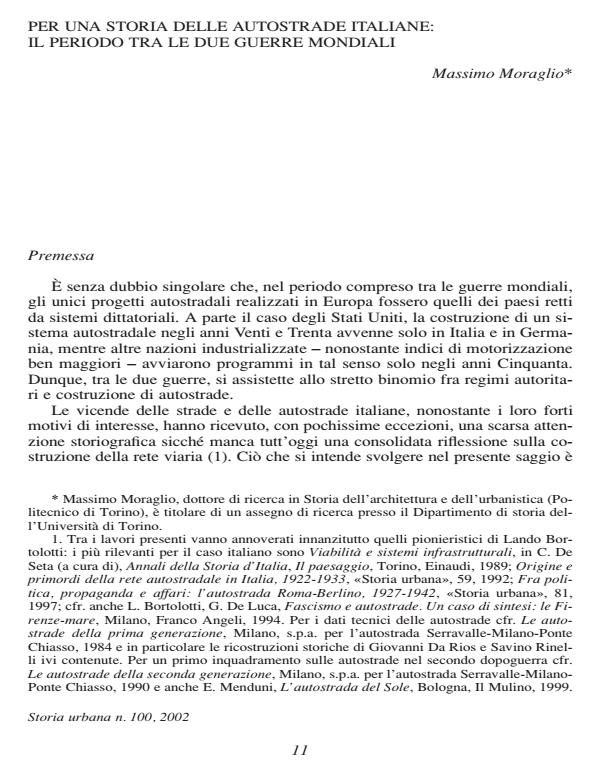Per una storia delle autostrade italiane: il periodo fra le due guerre mondiali
Journal title STORIA URBANA
Author/s Massimo Moraglio
Publishing Year 2003 Issue 2002/100
Language Italian Pages 15 P. File size 68 KB
DOI
DOI is like a bar code for intellectual property: to have more infomation
click here
Below, you can see the article first page
If you want to buy this article in PDF format, you can do it, following the instructions to buy download credits

FrancoAngeli is member of Publishers International Linking Association, Inc (PILA), a not-for-profit association which run the CrossRef service enabling links to and from online scholarly content.
Beginning with Piero Puricelli’s first project for the motorway that stretches from Milan to the lakes in the Alpine foothills, about 500 km of motorways were built in Italy between the two wars. The implementation of this network must not be viewed as an isolated event, but as part of the process of growth and modernisation of the Italian road network, from Giolitti’s age until the constitution of the Azienda autonoma statale della strada (Self-governing state road enterprise) in 1928. The building of motorways was meant to create new, long-distance communication axes as happened for the railway network in the nineteenth century. At the same time it was also a purely pragmatic choice aimed at obtaining advantages for various proponents (building contractors, automotive industry, professional associations). The Great Depression of 1929 brought network development to a standstill as the disparity between cost and benefit became more pronounced, especially for countries with a very low motorization index like Italy.
Massimo Moraglio, Per una storia delle autostrade italiane: il periodo fra le due guerre mondiali in "STORIA URBANA " 100/2002, pp , DOI: